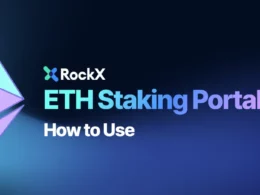We’ve all heard about the bear market. It seems that with every price drop, someone is crying about the imminent crypto market collapse. While this may seem like a disaster, in truth, bear markets are full of opportunities. One of these opportunities comes in the form of staking — earning the passive income with our crypto.
Today we will be exploring how staking works in the bear market works and why you should do it.
Is Staking Profitable?
Staking can be very profitable, almost as the mining or trading of cryptos. And it comes with a lot less risk. If you want to make money in, let’s say, trading, you have the skill and actively follow your investments. However, with staking all that is not needed. All you have to do is stake (buy and hold) some coins to the pool.

When staking coins, you should always keep in mind the price and value. Because like with any investment, staking can be profitable if done right. While the advice might tell you otherwise, investors should remember not to stake crypto that has a high inflation rate and is very volatile.
Even if you could make a killing with alt-coins, the value may fall sharply and leave you with no profits. So, your safest bet for staking for profitability is to go with more reliable and less volatile crypto.
Should I Worry About the Bear Market?
Like always, it depends. The most important thing to look out for when investing is fundamentals. No matter what many so-called financial experts say, fundamentals are always important.
When the project you invested in has real value and is not only a speculative bubble, then technically speaking, you do not have to worry about the bear market. If you invested in a project only because the price was going up, then yes, you should worry about a bear market. Projects with no fundamentals and real utility crash harder during a bear market and often do not survive.

Another mistake crypto investors often make is to “HODL” their crypto completely during a bear market. You should always take profits along the way and then use your gains to buy more during the bear market is one strategy. Be smart with your investments.
Why Should I Stake During a Bear Market?
Staking crypto during a bear market is a great way to accumulate funds. In the course of sometimes years, the bear market lasts, investors can stack up a lot of cryptos. They make a profit when the tides turn and the market is green again.

The best strategy is accumulating crypto that will survive the bear market, assets with real value. Staking coins that may go to zero before the bear market ends is a very bad idea, particularly if these have lockup periods. Often investors choose the wrong staking crypto and end up being stuck in them with the price crashing.
Having a lockup period should only be a concern if you are speculating. For long-term investors that believe in the project and fundamentals, it makes no difference.
How to Stake Coins for Gains?
Staking coins for gains is possible, but of course, you have to know what you are doing. These are four things to look out for:
- The quantity staked, which will often stay locked in the protocol for a certain amount of time.
- The more time you stake your funds the more you will earn.
- The yield, which depends on the supply and demand of a given staked coined.
- The price of the underlying token changing and eating into your profits. This is particularly true for short-term investors that want to sell their staking rewards as soon as they get them.
What Coins Should I Stake?
While we cannot tell you what coins to the stake, as every token has its own benefits, its important to take a look at some popular picks from both our community and the crypto space at large.
Polkadot
Polkadot is a next-generation blockchain that aims to connect blockchains into an efficient and scalable network. The blockchain works by using its DOT token. The project aims to improve on Ethereum’s issues, such as scalability and transaction speed.
The blockchains invented a consensus mechanism called NPoS (Nominated Proof-of-Stake). It makes the network more secure with the help of two groups, Validators and Nominators. Nominators choose the validators and stake their coins, be it DOT, and Validators make sure the protocol is running as it should.
Ethereum 2.0
Ethereum is the second biggest crypto, a decentralized blockchain network that connects different projects similarly to Polkadot and Cardano. Users can use the network to create, publish, monetize, and use other dApps. The whole project works with their native Ether token.
But investors cannot stake Ethereum on itself. Only the Ethereum 2.0 update makes it possible. Investors can earn a 6-7% return on their investment (as of this writing), but the downside is that funds have to stay locked in until Ethereum 2.0 is fully out, and that could take years. Therefore, staking Ethereum should be the best for long-term investors who believe in the project.
Final Thoughts
“A smooth sea never made a skilled sailor”
Bear markets are inevitable in the world of crypto investing. Fortunately, if you know what you are doing, you can also use bear markets to make a killing in the bull market. It is all a matter of perspective.
Staking can completely change the way you view bear markets.
With the right project, the SKY (fourth clue) is the limit. Learn the craft of crypto investing, and you will prosper. But even if staking crypto is safer than trading, always keep in mind the risk involved with this new asset class.
Please note, none of what is mentioned above is financial advice. Everything written here is for educational purposes only. Always trade responsibly, and don’t invest more than what you are willing to lose.









